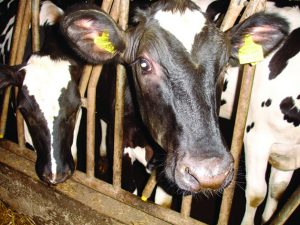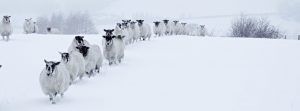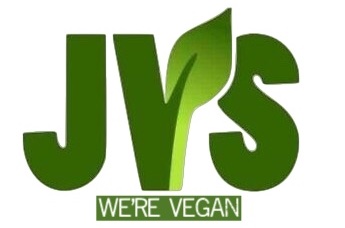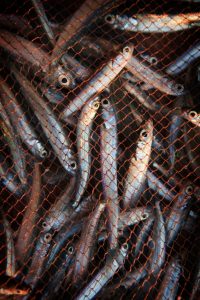This page makes for difficult reading. Here we reveal what food manufacturers don’t want us to see – as Paul McCartney famously once said – “If slaughterhouses has glass walls, everyone would be vegetarian.”
We highly recommend Ingrid Newkirk’s book: ‘Animalkind: Remarkable discoveries about animals and revolutionary new ways to show them compassion’.
Each year billions of land animals are killed for food around the world. Every year in the UK, around 1 billion animals are bred and killed for food – and that number doesn’t include fish.
The majority of these animals are confined to hard wire cages and gestation crates or packed by the thousands into dark, filthy sheds. Animals raised in these intensive farming systems are unable to raise their families, root around in the soil, build nests, or do anything that is natural to them. Most animals kept on factory farms will not see the sun or breathe fresh air until the day they are transported to a slaughterhouse to be killed.
Cows

- Cows in a herd form close friendships with two or three other cows and spend most of their time with these friends.
- Researchers have found that cows like the challenge of problem-solving and become excited when they complete a task.
- Like humans, cows can hold grudges against other cows for months or even years.
- Calves have to undergo the painful procedure of castration.
- Calves are disbudded or dehorned.
- Many cows reared for beef have no bedding and live on hard slats or concrete.
Sheep:

- Professor Keith Kendrick, from the physics department at Gresham College in London, found that sheep can recognise the faces of at least 50 other sheep and can remember 50 images for up to two years.
- Sheep experience fear when they are separated from their social groups or approached by strangers. Studies show that their heart rates increase when they are unable to see any members of their flock and increase even more when approached by strangers.
- Professor John Webster of the University of Bristol found that, like humans, sheep visibly express emotions. They show signs of depression by hanging their heads and avoiding positive actions.
- Though most sheep are not farmed intensively, they still suffer, for example through inappropriate handling, and extreme weather conditions resulting in pneumonia and hypothermia.
- Problems such as lameness and internal and external parasites are common in sheep farming.
- Sheep may be transported huge distances to slaughter – some journeys last over 24 hours
*Further reading: Click here to read more about farmed sheep.
Chickens:

- Chickens communicate using at least 24 distinct sounds, including separate alarm calls that identify different kinds of predators, such as a dog on the ground or a hawk in the sky.
- When in their natural surroundings chickens enjoy full lives in which they form friendships and social hierarchies, recognise one another, develop pecking orders, love and care for their young, dust-bathe, make nests and roost in trees.
- Mother hens cluck to their unborn chicks, and the chicks chirp back to their mothers from inside their shells. This establishes communication between them.
- The majority of broiler chickens live in large, crowded, windowless sheds with tens of thousands of other birds.
- Chickens in today’s factory farms grow three times as fast as they did 50 years ago as a result of selective breeding programmes and the use of antibiotics. This method of intensively farming chickens began in the late 1950s when the use of “dual purpose” chickens for egg and meat production came to an end and new poultry strains were introduced specifically for the production of meat.
- Most birds suffer from painful, crippling bone disorders or spinal defects making it difficult to move, as a result of their fast pace of growth. This can lead to birds suffering skin burns and infections because they become trapped in the mess on the barn floor.
- Click here to read more about chickens.
- More fish are killed for food each year than all other animals combined, as tens of billions of fish are slaughtered annually. 50% of all the fish consumed each year are now raised on fish farms, where they spend their lives crammed together, bumping against each other and against the sides of their crowded cages. Unless practices are changed, it is predicted that by 2048 all species of sea fish will have disappeared forcing people to rely almost exclusively on farmed fish.
- A quarter of all the fish caught each year (27 million tonnes) are thrown back into the sea as waste. Birds, turtles and dolphins are also often caught in nets. The documentary The End of Line reveals the true cost of fishing.
- ‘What a Fish Knows’ by Jonathan Balcombe 2016 reveals complex behaviours of fish, proving that they are sentient, aware and social.
- Fish have cognitive abilities that equal and sometimes exceed those of non-human primates. They can use tools, recognise individuals and sustain complex social relationships.
- According to biologists writing in Fish and Fisheries, fish are “steeped in social intelligence, pursuing Machiavellian strategies of manipulation, punishment and reconciliation, exhibiting stable cultural traditions, and co-operating to inspect predators and catch food”.
- Fish feel pain just as other animals do. Dr Donald Bloom, a scientific advisor to the British government, stated, “The scientific literature is quite clear. Anatomically, physiologically and biologically, the pain system in fish is virtually the same as in birds and mammals”.
- When fish are dragged from the water, they start to suffocate. Their gills often collapse, and their swim bladders can rupture because of the sudden change in pressure.
- Rearing fish in cages prevents their natural swimming behaviour. Fish like salmon naturally swim great distances. Confined in fish farms, they are restricted to swimming in circles around a cage, rubbing against the sides of the cage and each other.
- Fish as large as three-quarters of a metre long are forced to live in as little as a bathtub of water each.

